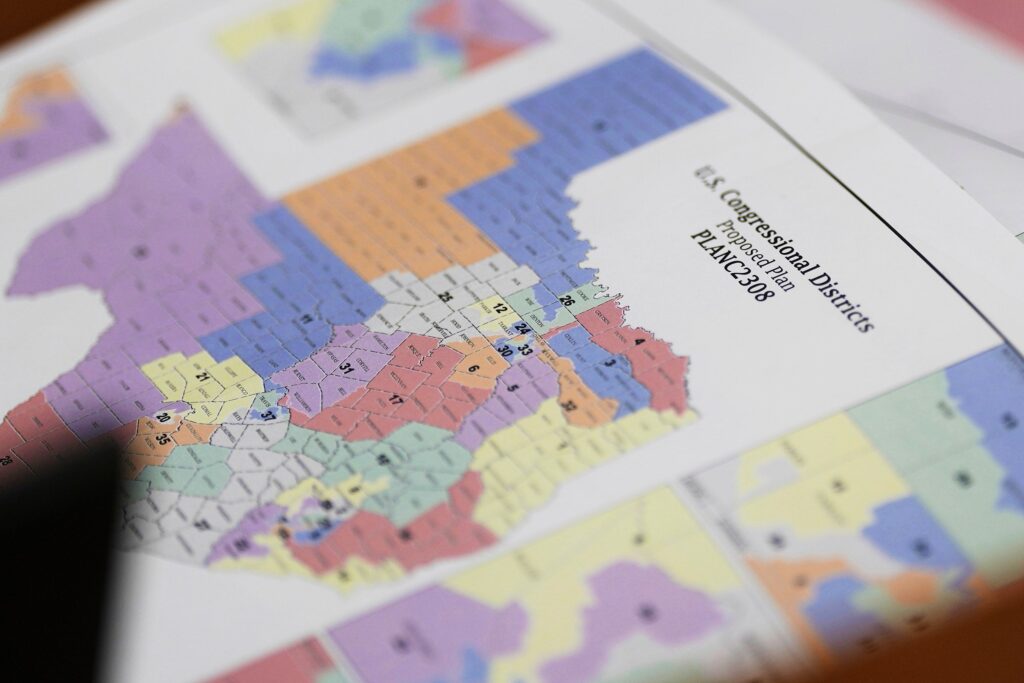Redistricting Battles Intensify in Texas and California
On September 2, 2025, Texas Governor Greg Abbott enacted a prominent bill aimed at redrawing the state’s congressional districts to favor Republicans. This move concludes a significant redistricting initiative that has garnered national attention and sparked parallel actions in California, where Governor Gavin Newsom is pursuing a redistricting campaign intended to bolster Democratic representation.
Missouri is also joining this growing trend, as Republican Governor Mike Kehoe announced on Friday the convening of the Legislature on September 3 to reconfigure the state’s congressional districts. Missouri currently has eight congressional representatives, with two Democrats among them.
Legal Challenges Ahead
Both Texas and California face considerable challenges regarding their newly proposed congressional maps. In Texas, while legislative and gubernatorial approval is sufficient to finalize the congressional maps, civil rights organizations have promptly contested them in court, citing racial bias. The maps defined by the Republican-majority Legislature back in 2021 are still under judicial scrutiny.
In California, voter approval is necessary for the congressional maps to become active. The Democratic-controlled state assembly and senate have agreed upon a proposed measure known as Proposition 50, which will be presented to voters in the upcoming November 4 ballot. This initiative, if accepted, would significantly modify the state’s congressional districts. California Republicans have contested these maps legally, arguing that Democrats did not adhere to the 30-day public review period for new legislation. However, the state Supreme Court rejected their petition on August 27.
Factors Behind the Mid-Cycle Redistricting
Typically, congressional district maps are redrawn once every decade, following the U.S. Census. However, this unusual mid-decade redistricting initiative was ignited by former President Donald Trump in mid-July, as Republicans endeavor to either maintain or extend their fragile majority in Congress ahead of the 2026 midterm elections.
Historically, midterm elections tend to challenge the party holding the presidency. Trump and House Speaker Mike Johnson have placed heavy emphasis on Texas, with Trump asserting that Republicans might seize an additional five congressional seats based on Texas’ voting patterns in 2024. Following this, Abbott summoned a special legislative session focused on redistricting. The Democratic legislators initially fled the state to obstruct the session but later returned, resulting in the successful passing of the legislation.
Impacts on Congressional Districts
The proposed maps in Texas aim to alter the state’s political landscape, which holds a total of 38 congressional seats, of which 25 are occupied by Republicans. There are signs of growing Republican presence in areas like the Rio Grande Valley, traditionally a Democratic stronghold. In contrast, the city of Houston is witnessing demographic shifts, affecting existing Democratic seats like Rep. Al Green’s rural district, set to transition from a 72% to a mere 40% Democratic voting base.
In California, the state has 52 congressional representatives—43 from the Democratic party and 9 from the Republican party. The proposed redistricting changes threaten previously stable Republican strongholds, such as Rep. David Valadao’s district, which would shift from a 47% to a 49% Democratic voter base, increasing his vulnerability.
Recent Redistricting Efforts across Other States
Amid these developments, other states are also exploring similar redistricting opportunities. For instance, Republican leaders in Indiana met with Trump and his administration recently to discuss restructuring Indiana’s nine congressional districts to disenfranchise the existing two Democrats. Furthermore, in Florida, the Republican House speaker established a special committee to examine potential redistricting strategies.
Key Redistricting Changes: A Snapshot
| State | Current Composition | Proposed Changes |
|---|---|---|
| Texas | 25 Republican, 13 Democrat | Shifting to increase Republican dominance |
| California | 9 Republican, 43 Democrat | Altered districts for more Democratic seats |
With the politically volatile climate, experts caution against assuming that recent voter trends will guarantee success for their favored candidates in forthcoming elections, underscoring how unpredictable voter sentiment can be.

